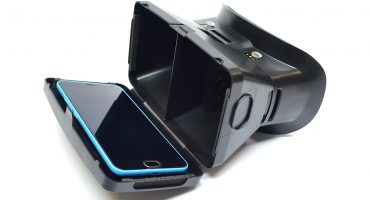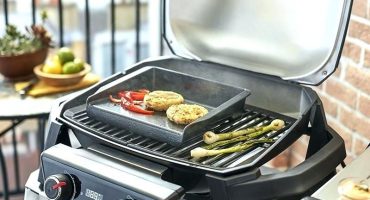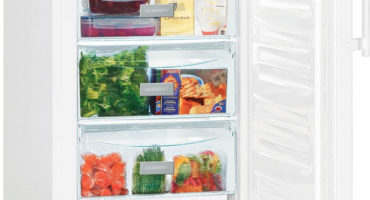A quality ceramic pan with its characteristics will delight any housewife. However, there are many offers on the market, and you need to know exactly how to choose the right ceramic pan by type and company. Only knowing which model you need can help you avoid disappointment from a failed purchase.
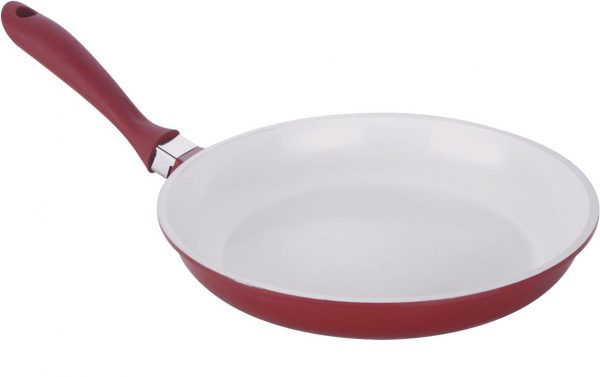
Ceramic pan
What are the advantages of a quality ceramic pan?
The ceramic coating is made on a metal basis and is made from environmentally friendly components. It is applied to metal using a special technology, has a perfectly smooth surface, and can be of different thicknesses.
If the technology is fully complied with, then the product has the following features:
- thick bottom and walls;
- non-stick properties;
- environmental Safety.
The thick bottom, combined with the properties of ceramics, gives the effect of a perfectly uniform distribution of heat, and it is easier for the housewife to fry food in a frying pan, bake or simmer it beautifully. It is not necessary to “stand over the stove” with it, and gas pressure drops are not dangerous (relevant for gas stoves).
The non-stick properties of the ceramic pan are so high that it can be cooked without oil or with a minimal amount. And a quality product lasts a very long time, if properly looked after. Non-stick properties last up to five years.
The environmental safety of ceramic glaze can be assessed in two ways. The coating itself does not evaporate harmful substances when heated. When cooking food on it, oil does not need to be heated to smoke temperature, which means that it does not change its properties and remains useful.
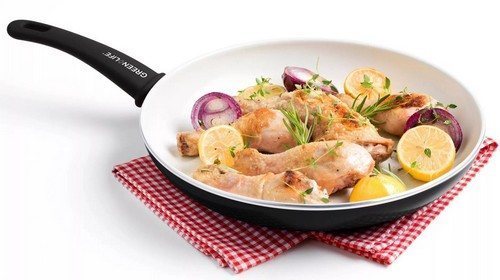
You can cook food in such a pan without oil
There are many low-quality ceramic-coated pans on the market that do not give the effect of uniform heating of food, quickly scratch and lose their non-stick properties. And in the composition of low-quality ceramics, chemicals that are harmful to the human body can be found.
The main criteria for choosing a ceramic pan
In order for the purchase to be successful, it is important to evaluate each product according to five criteria:
- size and weight;
- base material;
- bottom and wall thickness;
- ceramic coating method;
- manufacturer.
Having determined these criteria in advance, it is not difficult to choose a pan.
Size and weight of the pan
Ceramic pans have more weight than others, so it’s important to choose a convenient model. For stewing or baking, you can choose a heavy product, it does not have to be raised often during cooking. But when frying, baking pancakes, pancakes, a heavy frying pan will tire.
The diameter of the pans can be from 18 to 28 cm. But if you keep in mind the other characteristics of the products, then even the smallest pancake pan may not be very light with a good ceramic coating. Moreover, a light large frying pan should alert. But do not buy a thing that is difficult to lift.
Therefore, when buying a pan, you need to choose no more than 2 kg with the lid. However, it should be slightly heavier than other non-stick pans of the same size and purpose. Choose a middle ground is not difficult.
Base material
Ceramic spraying is applied to the metal, and as a basis are used:
- aluminum;
- cast iron;
- steel.
Aluminum is good for its lightness, so pans with it are easier. However, it has increased softness, due to which, under shock and active use, the base can be covered with microscopic dents. But the ceramic coating in these places will crack. Therefore, aluminum pans should be from a good producer, with a thick bottom and a guarantee.
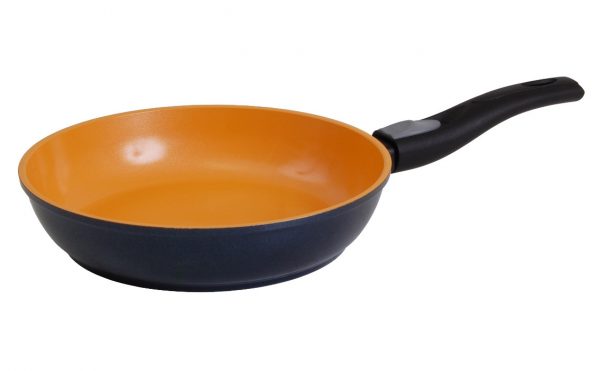
Ceramic-coated aluminum pan must have a thick bottom
Steel is also quite lightweight, but more durable. Pans from aluminum and become lighter, it is a good choice for frying, cooking pancakes, French toasts. They are cheaper than pig-iron, therefore they are more often produced, and there are more choices in stores.
Cast Iron Pans very heavy, reliable, and ideal for stewing, baking, cooking a large amount of food. They are more expensive, but will last a very long time with careful use.
Bottom thickness
The thick bottom protects the ceramic layer from deformation, and therefore, from cracks and chips. However, the thicker the bottom, the heavier the product. Therefore, the recommended thickness is 4-7 mm. There are simply no high-quality pans with a thinner bottom, and a bottom thicker than 7 mm is only suitable for products for stewing and baking products.
Products in which the bottom is of equal thickness with the walls will be the most practical. Thick walls help evenly distribute heat, and make the entire coating more durable and more holistic.
Coating method
To combine the two types of rather heterogeneous material, two methods are used. Cheaper is stamping. A ceramic layer is rolled onto a sheet of metal, and only then the product is squeezed out of the workpiece. In this case, the ceramic layer becomes uneven, which in the future will accelerate its destruction.
To determine that the pan is stamped, you need to carefully inspect the coating. Microscopic dashes going in one direction will be located on the entire surface. This is always a sign of a poor-quality frying pan.
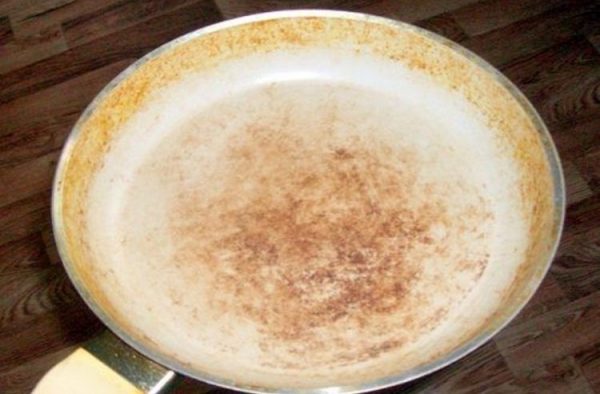
Traces of rapid wear on the ceramic pan
The second method is spraying. It is applied to the finished base, and solidifies directly in the pan. The method itself gives an excellent effect, since ceramics when hardening acquires special strength, smoothness. But the spraying must be applied efficiently.
Modern technology allows you to make it perfectly uniform, thick. These pans have an ideally smooth surface, and there is a neat rounded transition from ceramic to base along the edge of the walls.
Manufacturer
In our country, ceramic pans are still not so popular, and therefore brands that you can trust are not so famous. Therefore, it is worth getting to know companies that manufacture products with the best combination of price and quality. Particular attention should be paid to Italian manufacturers, which has a high rating, according to buyers.
Popular brands:
- TVS (Italy);
- Pensofal (Italy);
- Granchio (Italy);
- Lumenflon (Italy);
- Patlon (Japan);
- Bergner (Germany);
- Landskrona (Russia).
TVS pans cost from 600 rubles and above, reviews about them are very positive. Pensofal produce pans costing between 500-800 rubles, however, according to reviews, they serve less than other representatives of Italian industry.
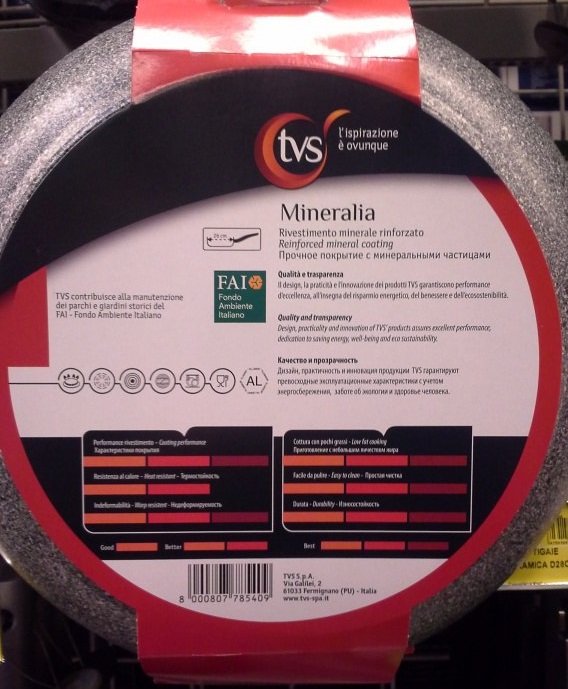
Detailed instructions must be attached to the pan.
Granchio produces pans of the average price category, costing 800-1500 rubles on average. However, reviews about the quality of ceramic coated products are different, there are many complaints of quick wear. And under the Lumenflon brand, excellent, durable, very aesthetic and convenient frying pans are produced, the prices of which correspond to quality - 2500-3500 rubles per unit.
Japanese Patlon is excellent quality at a reasonable price - from 1000 per pan. The manufacturer has many positive reviews. But Bergner are characterized by German quality factor and ergonomics. In accordance with the quality and price - an average of about 2000 rubles per product.
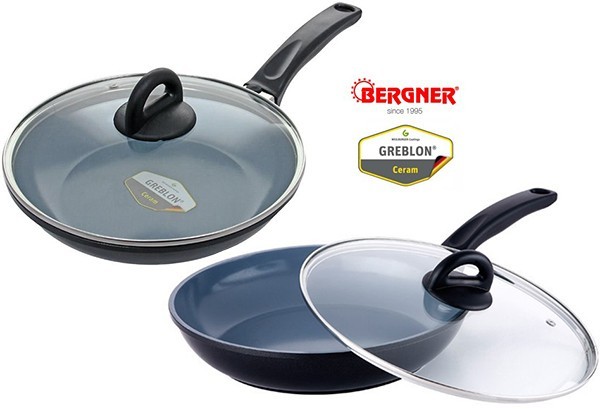
Ceramic pans Bergner
The Russian manufacturer Landskrona also belongs to the middle price category, a medium-sized frying pan will cost from 800 rubles. The quality reviews are positive, the products are durable and easy to care for.
Other characteristics of ceramic pans
When the main characteristics are selected, you can pay attention to the details. Details include:
- product color;
- shape and material of the handle;
- care options;
- bottom relief.
The inner surface of the pan is usually painted white and light beige. It is believed that it is a beige shade that is a sign of coating quality. However, modern types of glaze can be of any shade, and this does not affect the quality. So, they even make a gray coating so that the pan is uniform in color.
But the outer surface is painted in classic black, gray, and in a variety of bright colors: red, green, yellow and others. Therefore, the choice is reduced only to the proposals of the most attractive manufacturer and the personal taste of the buyer.
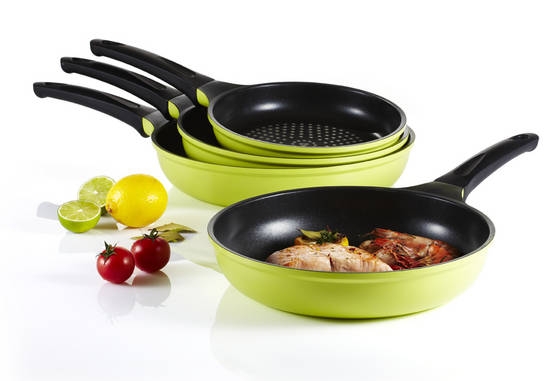
Bright colors make the pan more attractive.
Handles can be different: metal and with a heat-resistant coating, removable and permanent. Metal handles are good because they do not melt in the oven. They are more hygienic, but you can not work with them without tacks. It is rather the choice of professional chefs. Silicone, with wooden linings or plastic deteriorate in the oven, but you can safely take them by hand without a tack.
Removable handles make the pan universal - you can fry on it, it can be used in the oven. However, with quick work in the kitchen, this may not be very convenient. If the handle is non-removable, then the most reliable option is cast. The handle on the external bolts may become loose over time.
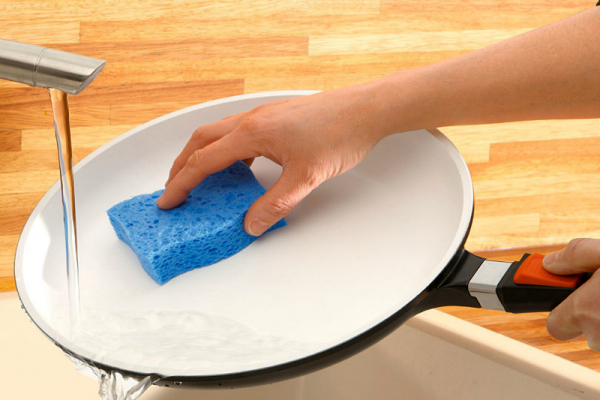
Care for such a pan should be careful
Caring for any ceramic pan excludes iron washcloths, and you need to look at the instructions for each specific product to see if this particular model can be washed in a dishwasher. It is also undesirable to use abrasive detergents. Fortunately, such pans rarely need such an active laundering.
The bottom of the classic ceramic pan is perfectly smooth, which makes it easy for the hostess to do any work. In such a pan, it is convenient to stir the food, turn it over. However, some models for frying have a corrugated bottom, on which you can beautifully fry pieces of meat or fish.
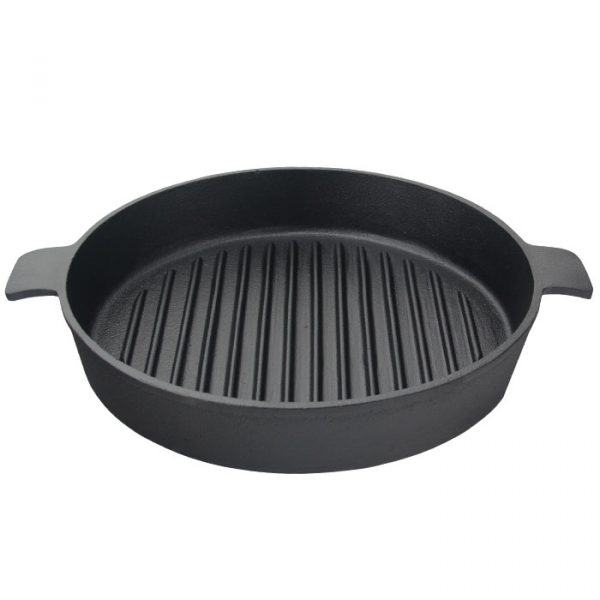
Corrugated frying pan
Features of ceramic pans
Such pans can withstand heating up to 450 degrees Celsius, which makes it very beautiful to fry foods. In this case, you can use a minimum amount of oil, which increases the quality of the finished food and makes it healthier.
However, ceramics cannot withstand sudden changes in temperature. Therefore, you can not put such dishes under a stream of cold water, you can not put food on it from the freezer. Sudden changes in temperature lead to cracking of the ceramics, which first causes the non-stick properties to be lost, and then visually distinguishable scratches appear.
You can’t use metal spatulas with this pan, scratch the bottom with spoons or forks. But wooden and plastic products can be safely applied, even using pressure and effort. The main danger for ceramics is not possible scratches from the metal, but small impacts on the coating when mixing food.
Important! Ceramic pan is not suitable for induction electric ovens. Heating on such hobs is only at the dishes, the bottom of which has iron impurities. Ceramics are suitable for other types of furnaces.
A ceramic frying pan correctly selected for the individual requirements of the owner will serve for several years and delight in the quality of the food cooked on it. Such pans are safe, attractive in appearance, and will be loved by a practical housewife.

